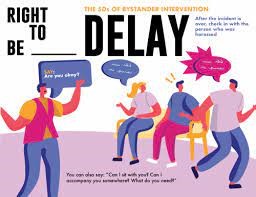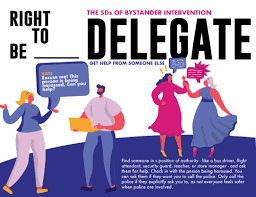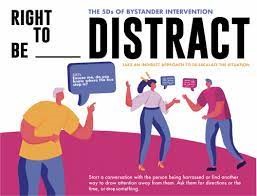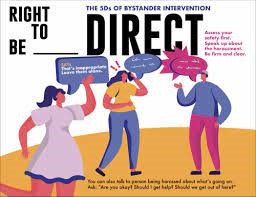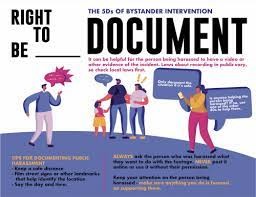Often people are so resigned to constant harassment and abuse that they believe it is something they must put up with, as though it's part of daily life. Everyone needs to make it clear that they find all forms of harassment unacceptable and take a stand against it.
Witnessing street harassment and not safely intervening sends the message to those experiencing and perpetrating it that it's okay and that society considers the behaviour acceptable.
Acceptance of street harassment contributes to a toxic culture that perpetuates inequality by denying equal access to public spaces. Public spaces should be safe and inclusive for all.
What can I do if I see it happen?
The simplest thing that we can all do is ask ‘Are you okay?’ to someone experiencing it. If you see someone experience street harassment, and it is safe to do so, ask them that question. It can make a big difference to those who experience harassment by letting them know you stand by them, and that street harassment is never okay. If you see it. Ask it.
We can all do this small yet powerful act. By asking 'Are you okay?' we become active bystanders safely intervening to offer support to someone. Watch this video and imagine you were the one experiencing unwanted touching, indecent exposure or offensive comments or gestures. Would you want someone to ask you if you were okay?
If someone is not okay and needs further support, please see our Reporting and Support [insert link] section.
What else can I do if it see it happening?
The 5Ds methodology by Right To Be is an expert-approved set of tools to help you safely intervene when you witness street harassment. Remember, the first rule is to prioritise your personal safety. Do not challenge harassers if they are threatening or you believe they may cause harm to you or the victim if you do so. Which approach(es) you use will depend on the situation:
|
Delay - Comfort the harassed person after the incident and acknowledge that the behaviour was wrong. Be a friend.
|
Delegate - Find someone in a position of authority (e.g. shop security, bartender or a bus driver) and ask them to intervene. |
|
Distract - Pretend to be a friend, ask for the time, cause a distraction, and be creative |
Direct - Speak up, call the harasser out, and then turn your attention to the person being harassed. If they respond, ignore them; don't escalate. Only use his method as a last resort to prevent violence. Your safety and that of the person being harassed come first |
|
|
|
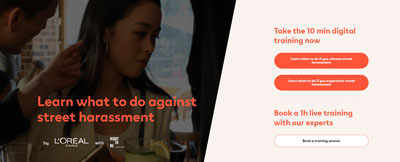 L'Oréal has produced a short training video showing examples of harassment and how to safely intervene using the 5Ds approach.
L'Oréal has produced a short training video showing examples of harassment and how to safely intervene using the 5Ds approach.
We encourage people to intervene only if it is safe to do so. Intervening safely is about being an active bystander. You can learn more about that on our Being an Active Bystander page.
Above all, always prioritise your safety. Remove yourself from the situation if you are in danger or believe the situation may escalate. If you feel safe enough to do so:
- Say something: Do not challenge anyone who is threatening you or if you believe they may cause harm to you if you do so. If it is safe to do so, tell the person harassing you to stop what they're doing, to move away from you, or tell them why they're making you uncomfortable. Once you set boundaries, don't get into a back-and-forth dialogue with the person, they are not likely to be in a mindset where they're willing to listen.
- Ask for help: Ask someone around you for help. If there are people around, but no one saw what happened, tell them precisely what the harasser said or did and what the harasser is wearing so the bystander can help identify them. You can ask them to stay with you for a minute or contact someone in an authority position (e.g. a security guard).
- Record it: Consider taking a picture or video of what's happening - or ask a bystander to do it. Make sure you record the location and harasser clearly.
- Report it: Street harassment is vastly under-reported, despite the increasing rates of incidents. By reporting an incident, even anonymously, you will help to raise awareness about harassment and improve the response by the police and other agencies. If you worry about the police contacting you at home, you can ask them to contact you through someone you trust who has agreed to provide their details, such as a friend, family member or your local Neighbourhood Watch Coordinator. Find out more about reporting it here
Want to do more? Have a look at other ways you can take a stand against street harassment.

